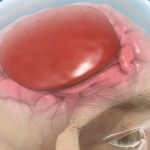What are shin splints?
Shin splints are also known as tibial stress syndrome. Shin splints are common in athletes such as runners and dancers.
Shin splints cause pain along the lower part of your shinbone, often on the inside edge.
Your tibia (shinbone) is found at the front of your lower leg. It runs from your knee to your ankle.
Shin splints are caused by inflammation. This is caused when your muscles and tissues that attach to your shinbone are:
- used incorrectly
- overused
- out of alignment
Shin splint pain can flare up when you start to exercise. Usually, the pain improves as you warm up.
What are the different types of shin splints?
There are 2 main types of shin splints, depending on which area and muscles of the shin are affected.
Medial tibial stress syndrome is the most common type of shin splint. It causes pain along the lower two-thirds of the inside edge of the shinbone.
The other type is called ‘anterior tibial stress syndrome’, where the pain tends to be along the front and outside edge of the shinbone.
What are the symptoms of shin splints?
Shin splints cause pain:
- on the front of your lower leg
- in the muscles on either side of your shin bone
You may experience this pain both during exercise and at rest. The painful area may also be swollen and sore to touch.
What causes shin splints?
Shin splints are caused by overusing your lower leg muscles and bone tissue. This can be due to:
- a sudden increase in the amount or intensity of exercise
- the ankle joint rolling inwards too far as the running foot hits the ground (over-pronation)
- running on uneven or hard surfaces
- using unsupportive shoes
Over-pronation is more common in people with flat feet.
When should I see my doctor?
Contact your doctor if you experience symptoms of shin splints. Seek medical attention right away if the pain is very bad or you have trouble walking.
How are shin splints diagnosed?
Your doctor will diagnose a shin splint by examining you and asking about:
- the exercise you’ve been doing
- the type of pain you have
- the location of your pain
If your doctor is worried that something else is causing your pain they may order an:
- x-ray
- bone scan
- MRI scan
- CT scan
How are shin splints treated?
You can usually ease the pain of shin splints by resting. Other ways to manage shin splints include:
- putting an icepack on the area for 15 to 20 minutes, several times a day
- taking over-the-counter anti-inflammatory pain relief, such as ibuprofen or aspirin
- avoiding the activity that causes you pain
You can also see a physiotherapist or exercise physiologist for your shin splints. They can help you recover safely by advising you on:
- strength and conditioning exercises
- flexibility exercises
- orthotics to stabilise your foot and absorb shocks
When you return to exercise, you should do so gradually over a few weeks. You should:
- run on soft, level ground
- slowly increase the length and intensity of your exercise to what it was before your injury
- wear sturdy, supportive shoes
- use insoles for arch support
- take part in low impact sports such as swimming and cycling
Can shin splints be prevented?
You can prevent shin splints by:
- wearing well-fitting shoes
- using shock absorbing insoles
- warming up before physical activity, and cooling down afterwards
- exercising at a pace appropriate for you
- allowing yourself to recover after exercise
Complications of shin splints
The pain from splints can hinder your movement and stop you from being active.


